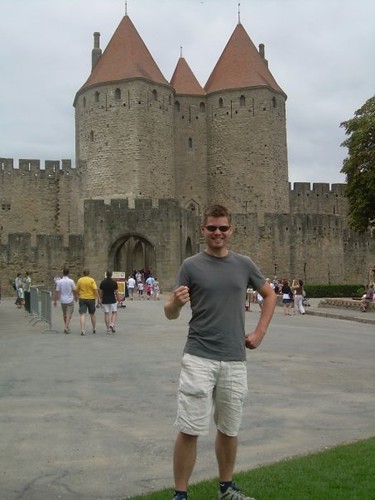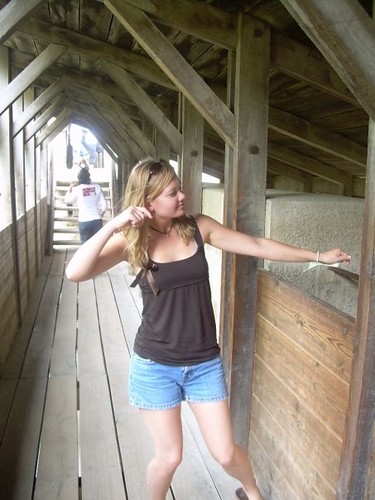 However, by the time that Napoleon came to power warfare technology had passed Carcassonne by and the walls were ordered to be demolished. This disturbed the locals who were extremely proud of their heritage. Instead, they hired Eugène Viollet-le-Duc, an architect renown for medieval restoration, to return the city to its former splendor. The work took decades of research, and modern historians concede that Viollet-le-Duc sometimes missed the mark. The cone-shaped roofs on the towers, for example, would not have been typical in the southern climate where snows are rare and light. The result of these efforts provide one of the most authentic medieval experiences in Europe.
However, by the time that Napoleon came to power warfare technology had passed Carcassonne by and the walls were ordered to be demolished. This disturbed the locals who were extremely proud of their heritage. Instead, they hired Eugène Viollet-le-Duc, an architect renown for medieval restoration, to return the city to its former splendor. The work took decades of research, and modern historians concede that Viollet-le-Duc sometimes missed the mark. The cone-shaped roofs on the towers, for example, would not have been typical in the southern climate where snows are rare and light. The result of these efforts provide one of the most authentic medieval experiences in Europe. My sister and I had a blast wandering the ramparts, pretending to be knights and archers in defense of the city. Carcassonne has every element that you imagine in a medieval fortress: moats with drawbridges, high towers, a secure keep, and crenelated walls. I was also surprised to learn that large wooden platforms were built on the tops of some walls to provide more room and protection for archers and men operating the siege defenses, including cauldrons of boiling hot water.
My sister and I had a blast wandering the ramparts, pretending to be knights and archers in defense of the city. Carcassonne has every element that you imagine in a medieval fortress: moats with drawbridges, high towers, a secure keep, and crenelated walls. I was also surprised to learn that large wooden platforms were built on the tops of some walls to provide more room and protection for archers and men operating the siege defenses, including cauldrons of boiling hot water.Though it was admittedly fun to play the part of the crusaders, there are dark chapters in the city's history, frequently written by those soldiers said to be acting on God's behalf. In the early 13th century a crusade was called for in southern France and Catelonia. A religious sect known as the Cathars grew large enough to trouble the Catholic church. In the ensuing conflict, the tall walls of Carcassonne were not sufficient to protect the Cathars indefinitely. In a short time the Albigensian Crusades had completely eradicated the non-believers.
![Reblog this post [with Zemanta]](http://img.zemanta.com/reblog_e.png?x-id=fdc4504e-67bb-4151-bfc0-23382b19dce7)

South-West ? Why not north of Barcelona either West of Marselha/Marseille, Easth of Bordèu/Bordèu, South-Easth of London ? The real and full name is Lengadòc, in occitan language.
ReplyDeleteThanks for sharing this post. Carcassonne is popularly known as Carcassonna. Folketymology technology is used to build this Frrench settlement. This place is a must visit. You can enjoy the shuttle bus service while visiting Carcassonne. You can book the French Rail pass to travel other fantstic spots of France. The weather of the city is good and spring is the best time to visit this place. For more details refer Carcassonne tourist attractions
ReplyDeleteArchitecture Design services in Dubai
ReplyDeleteInterior Design services in Dubai